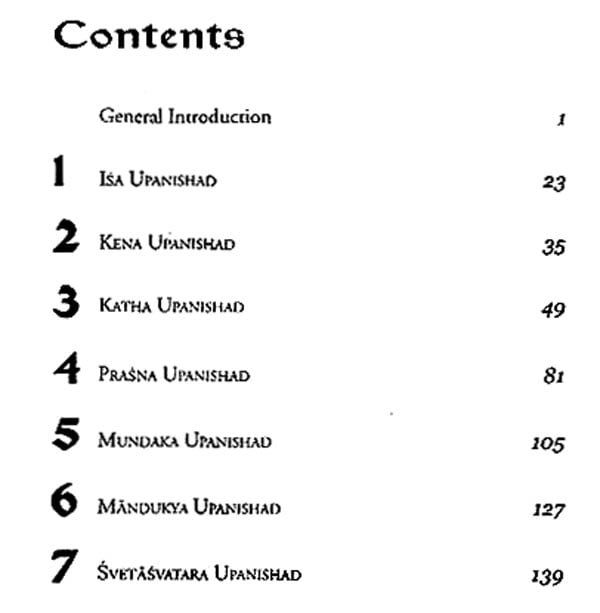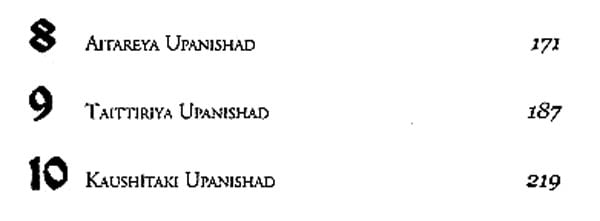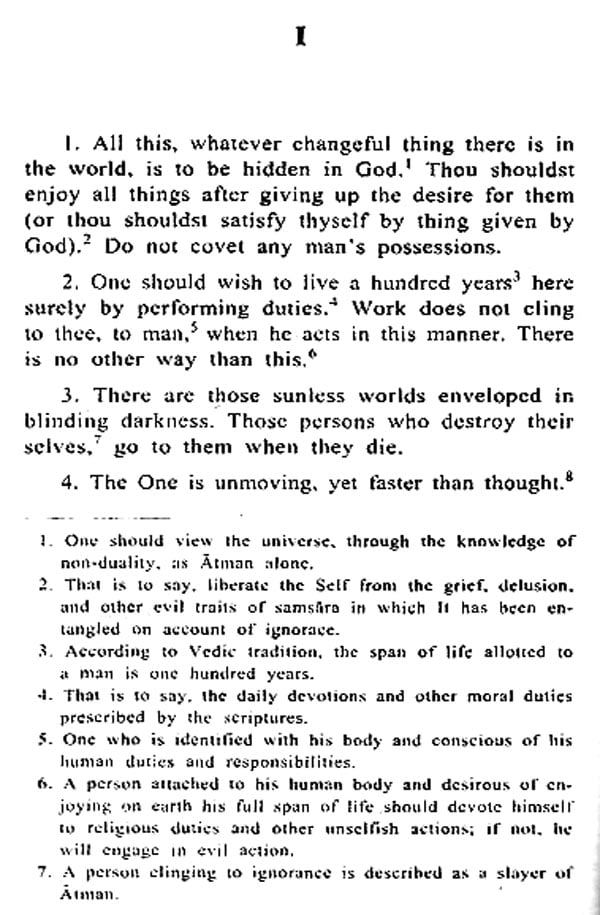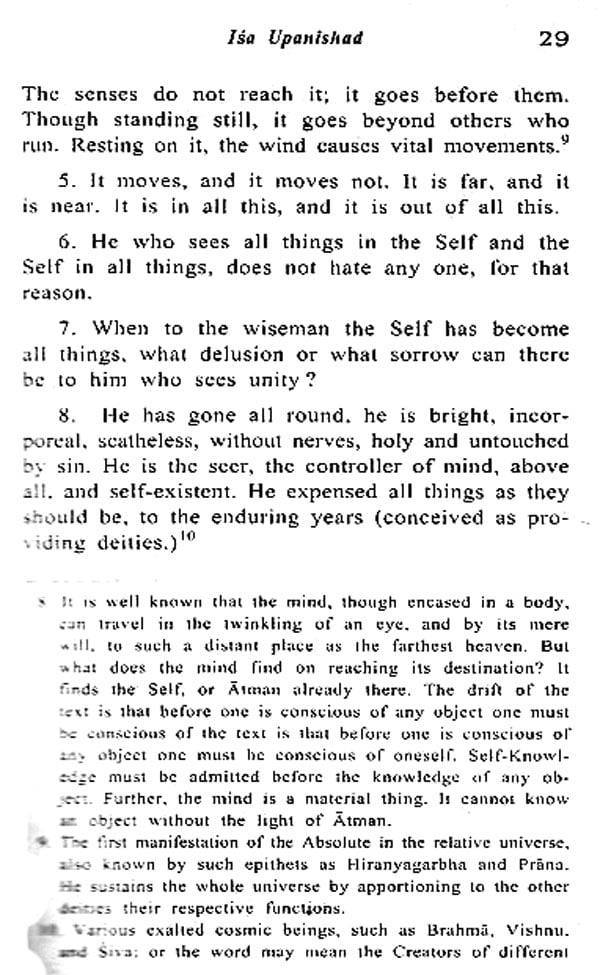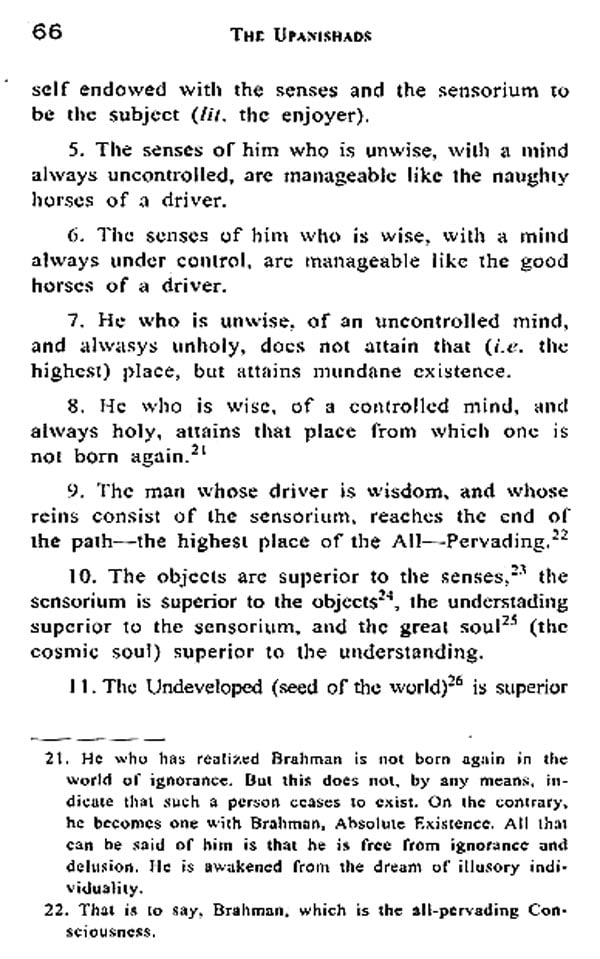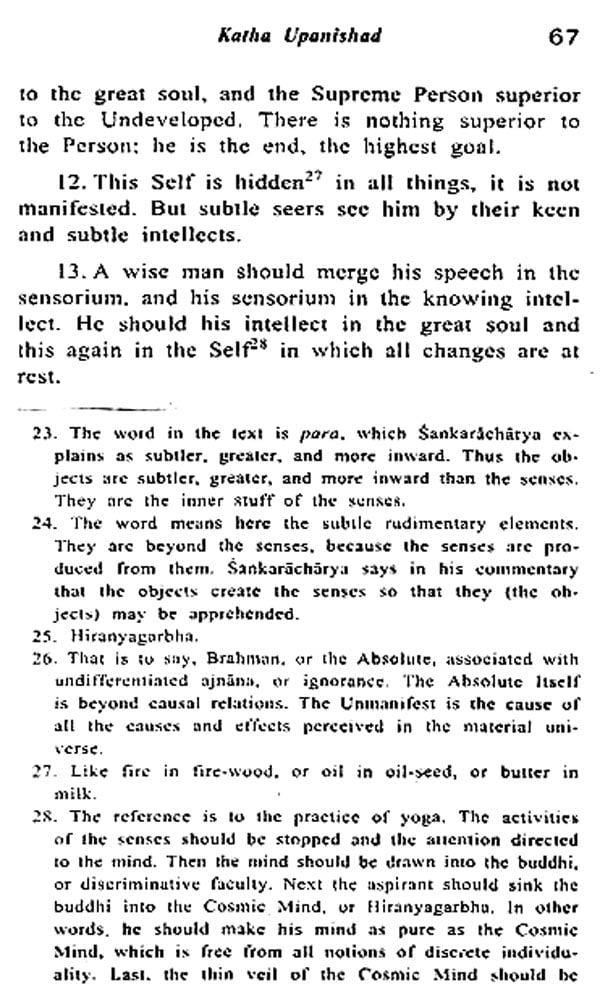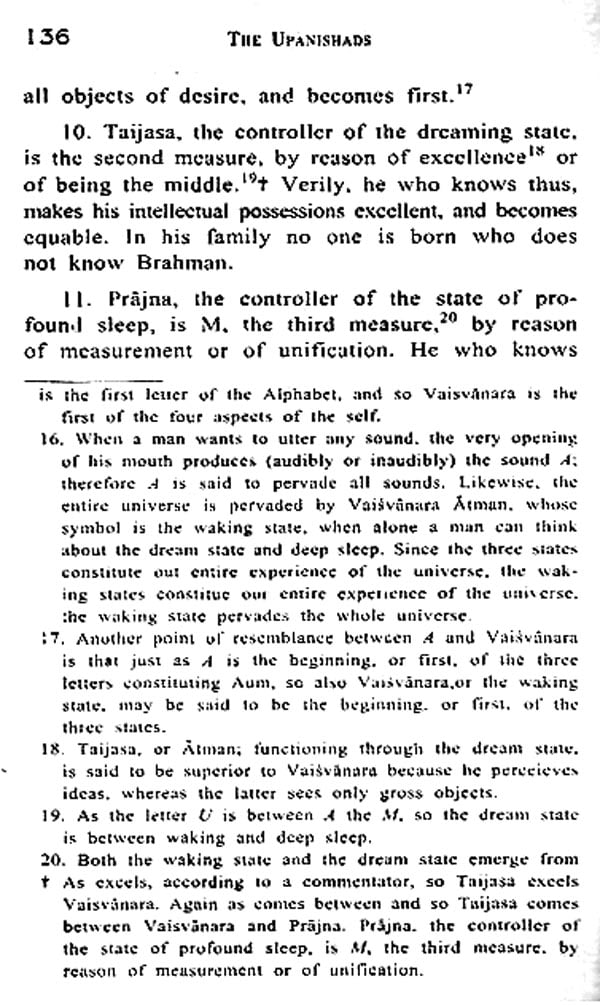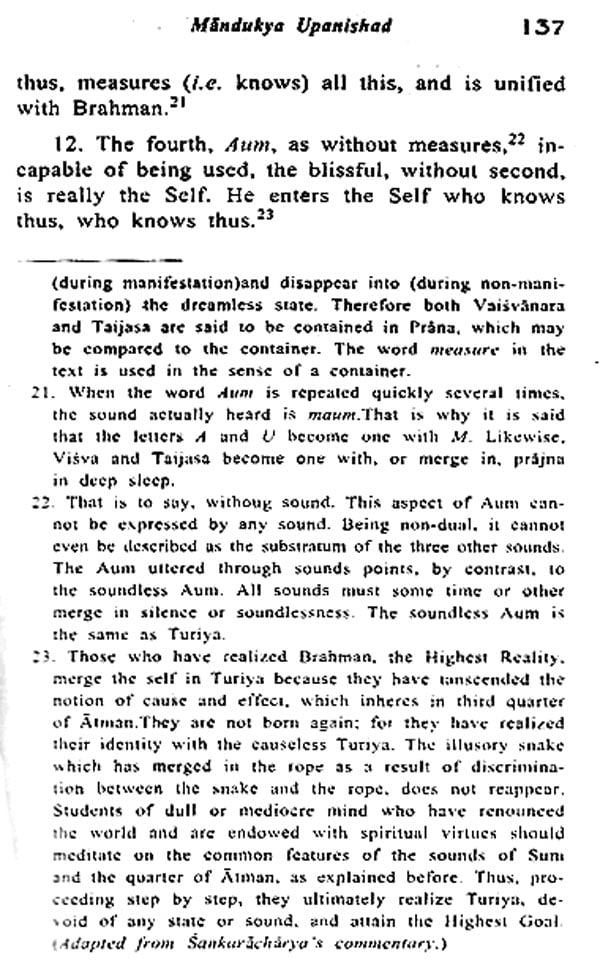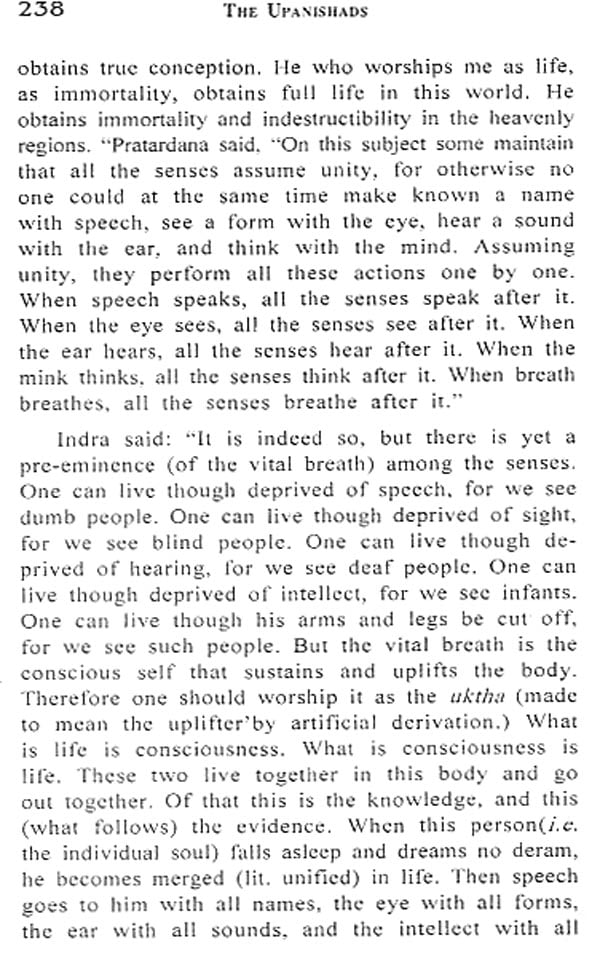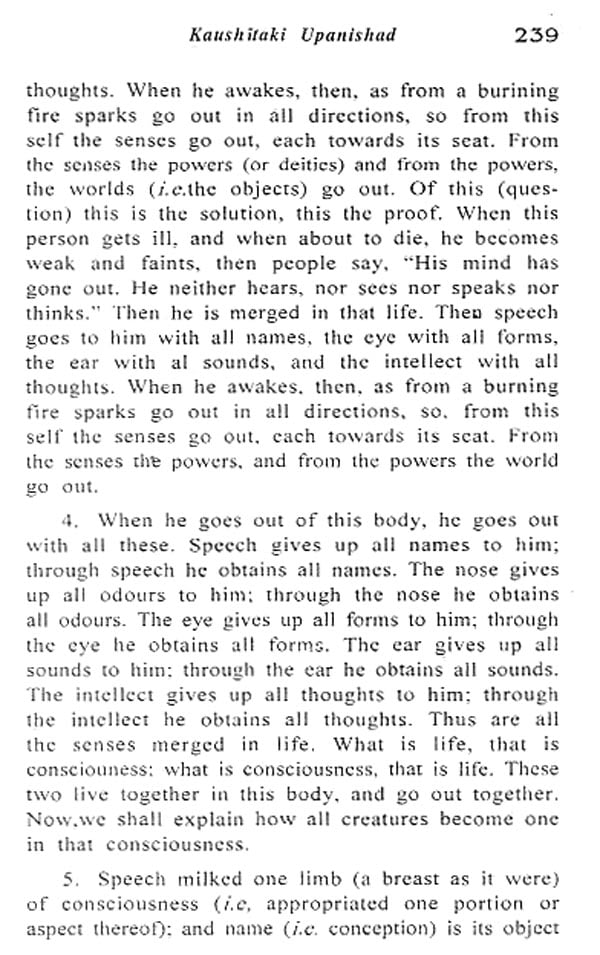
The Upanishads
Book Specification
| Item Code: | NAV275 |
| Author: | S. Tattvabhushan |
| Publisher: | Cosmo Publications, New Delhi |
| Language: | English |
| Edition: | 2003 |
| ISBN: | 9788129200365 |
| Pages: | 252 |
| Cover: | PAPERBACK |
| Other Details | 7.00 X 5.00 inch |
| Weight | 220 gm |
Book Description
Although the Upanishads are by far the oldest outpourings of the mystical consciousness of man, they have remained unequalled by any rival, ancient or modern, in profundity, splendor, and purity. For countless generations of men, both inside and outside India. they have been the supreme sources of the spiritual life. Though historically the products of India, and of a particular age, they are in essence ageless and universal. They are rivers of life which never dry up."
This volume of the Upanishads, contains ISa, Kena, Katha, Praina, Mundaka, Mandulcya, Svettlivatara. Aitareya, Taittiriya, and Kaushitaki. These are the major Upanishads and are regarded as the basis of the Vedanta philosophy, the outstanding contribution of the Hindu thinkers to the philosophical thought of the world.
For the uninitiated the vast Vedic literature of the early Indo-Aryans is often a trackless tropical forest, full of lush underbrush, Weeds, thorns, and stately trees. Travelers in it often become dismayed, bewildered, and lost: yet if they courageously and patiently push on, they are rewarded by the discovery of blossoms of rare beauty and fragrance. The present volume contains some of these blossoms.
What are the Upanishads?
The Upanishads are theological works treating mainly of the Supreme Being, his relation to the world and to the individual soul, and the duties arising out of this relation. They contain much philosophical matter, but they are not systematic treatises on philosophy. Like the Bible and other ancient scriptures, they contain exhortations on ethical and spiritual life, anecdotes, stories, poetry, psychology and de-vout utterances which are often poetical as philosophical. They are alike the basis of the systematic philosophies of ancient India and of its whole religious literature on its higher levels. While philosophical and religious sects vary widely from one another, and have particular text books expounding their peculiar views, all honour the Upanishads as the final authority on all higher matters and take special care to show that their sectarian tenets are in harmony with the teachings of these sacred books. They arc, so to speak, the one insectaria basis and meeting place of all conflicting sects.
The Upanishads and the Vedas
The Upanishads are believed to be parts of the Vedas, the most authoritative of Hindu scriptures. The latter, though originally one undifferentiated mass of oral compositions, were, in some remote period of antiquity, arranged in three, and latterly four. compilations for the convenience of four classes of priests officiating at sacrifices. These four classes are the Hotris, the Udgatris, the Adhvaryus and the Brahmus. The Hotris have to use sanbita or compilation called the Rig-Veda, consisting chiefly of riks or metrical texts: the Udgatris use the Samaveda Sanhitfi, consisting chiefly of amans or hymns; the Adhvaryus use the Yajarveda Sanhita consisting chiefly of yarns or prose texts; and lastly the Bralunfis or presiding priests use the Atharvaveda Sanhitzi, so called from Atharvan, the reputed auther of the four-fold divi-sion of the Veda. This last mentioned compilation contains, besides the texts to be used by the above-mentioned priests, a large mass of texts on such matters of minor importance as magic, amulets, charms &c. To each of the four sanhiais or bodies of mantras. were gradually added treatises, called Briihmanas. containing details of sacrifices and other ceremonials and latterly Aranyakas or forest-books for the special use of retired anchorites and devotees living in forest solitudes. Of the Upanishads which really form parts of the Vedas, one is to be found in a Sanhini and the rest are contained in the Brahmanas and the Aranyakas. But though thus closely related to the other portions of the Vedas, they represent a stage of religious thought and life much higher than what is indicated in those portions. While the Sanhitis and Bnihmanas are almost wholly occupied with ceremonial and its supposed results in afterlife in the shape of happier regions and richer enjoyments, the Upanishads indicate a dissatisfaction with merely ceremonial and practical life, set forth the claims of speculative knowledge and devout meditation, and prescribe inward disciplines of pure thoughts and disinterested motives. Hence the former arc called the karmakanda or ceremonial portion and the latter the janakanda or gnostic portion of the Vedas.
Number and classes of Upanishads
Up to the present time, about 150 treatises have been discovered, all of which bear the name of `Upanishad and thus claim to be parts of the Vadas. The place of some of them in the one or other of the portions of the Vedas named above, is well assured by tiller being found in the existing rescensions of the Vedas. Of the rest, some, though their place in the Vedas is not so well assured, bear the stamp of Vedic speculation so clearly, that they, if not Vedic may still be called Arsha, i.e. composed or taught by rishis or ancient sages. They have pre-served the insectaria character of the earlier treatises and inculcate the contemplation of Brahman, the infinite and undivided Being, the common object of worship to Hindus of all denominations. But there are treatises calling themselves 'Upanishads' which are clearly sectarian and the products of later age. They put forth the claims of Siva. Vishnu. Sakti. Rime, Krishna and other deities and incarnations whose worship is confined to particular sects and communities. It is evident that later sectaries, on finding that the Upanishads commanded universal reverence, embodied the views of their particular sects in works written by them and passed them off as Upanishads. These Upanishads are called S5Inpradayika or sectarian Upanishads. Again, even Non-Hindus have sometimes availed themselves of the universal reverence for the Upanishads and put forward the claims of their religions in 'Upanishads' of their own making. An example of this is to be seen in the Allopanishad.
**Contents and Sample Pages**
